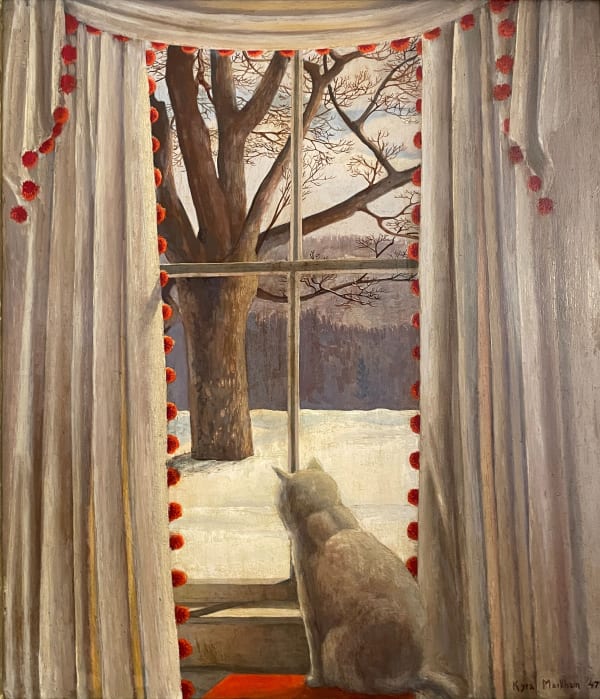May Mott-Smith (1879-1952) was a woman ahead of her time. In an era when the possibilities for women were extremely limited, the thrice-married Mott-Smith roamed across the globe, working as a painter, sculptor, jewelry designer, and travel writer. The watercolors by this intrepid traveler and unique woman painter continue to appeal to this day.
May was born in Honolulu in 1879. Her father, John Mott-Smith went to the Kingdom of Hawaii (it did not become part of the United States until 1898) after the California Gold Rush and worked as one of the first dentists on the island. He then became a politician, newspaper editor, diplomat, and land speculator. By the time he died in 1895, he left his seven children an estate worth about $300,000 including sugar plantations. May’s share was estimated between $60,000 and $90,000 (about 2 to 3 million in 2020 dollars).
May Mott-Smith began painting at 11 years old and studied art in Paris at Académie Colarossi and Mark Hopkins Institute in San Francisco. She exhibited her work at the Saint Louis Exposition (1904), the Panama-Pacific Exposition (1915; silver medal for jewelry), and the Panama-California Exposition (San Diego, 1915-17; bronze medal for bas relief), as well as in Paris, New York, Chicago, San Francisco, Los Angeles, and Honolulu. In addition to painting, sculpting, and designing jewelry, Mott-Smith created miniatures, plaques, and medals of famous people.
In the 1920s, she began to travel the world in search of artistic material, especially visiting places where most U.S. women would not dare to go. After a trip to Afghanistan, she wrote a pamphlet in 1929 entitled On the Khyber to Kabul. Her experiences in Soviet Russia yielded Roughing It in Russia On Twenty Dollars a Day. A Jamaican newspaper noted in 1934 that she was “one of the select few women who have invaded Devil’s Isle in Cayenne, the French convict settlement.”
Her most easily accessible literary work is Africa from Port to Port (1930) in which she described a two-year tour around the coast of Africa as a single woman. Her journey began in Tripoli, went west to Morocco and then south to Senegal and Cape Town, up the east coast of Africa (including Madagascar) and ended at Port Said. Mott-Smith’s writing gave a vivid eye-witness account of Africa in its mid-colonial stage, with its dirty hotels, impassable roads, and boisterous street scenes. Although she displayed the typical prejudices of her time, her travelogue remains a valuable resource. One reviewer noted that “she has an observing eve and a bright pen, besides a camera, which she used generously and cleverly to illustrate her story.” Her book was illustrated by Al Hirschfeld (1903-2003), later a world-famous caricaturist.
Wherever she traveled, Mott-Smith painted the local scenery and native inhabitants, often with a broad free technique and loose brushwork. Some examples of her exotic subject matter include scenes set in China, Afghanistan, Switzerland, Italy, Croatia, and Africa. In 2016, her watercolor “View of Hong Kong Harbor” sold for $7,750. She also painted domestic scenes and landscapes.
Mott-Smith spent her declining years at the Windermere apartment house (West 57th St. and 9th Ave.) in New York City from 1944 until her death in 1952 at age 73. She was buried in Oahu Cemetery, Hawaii.
